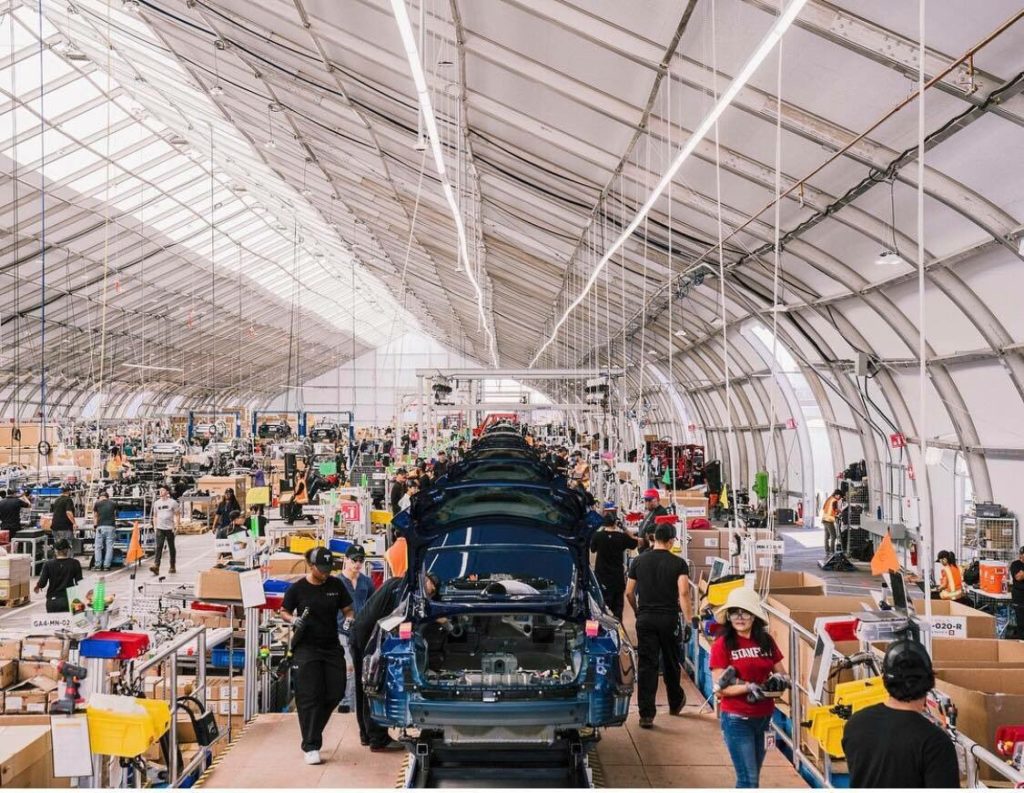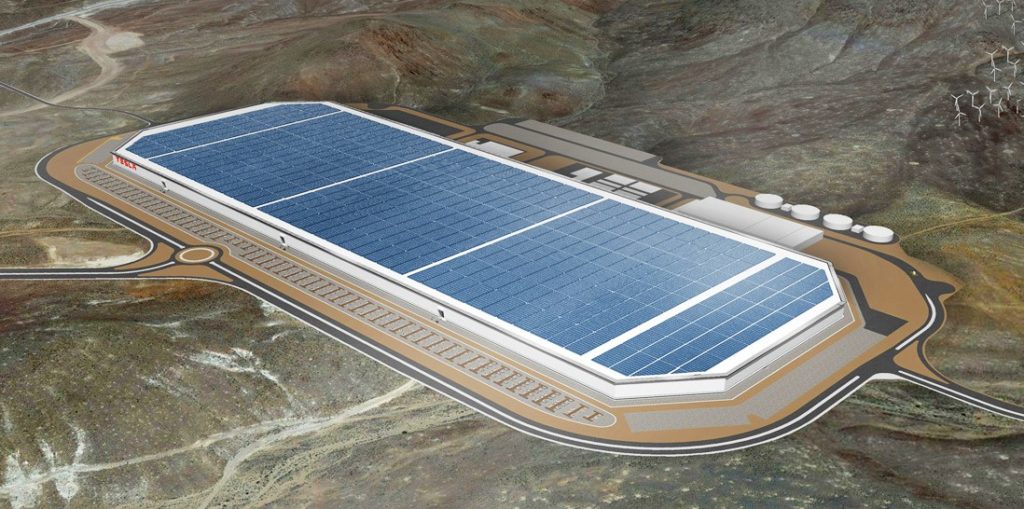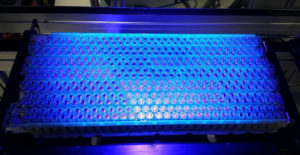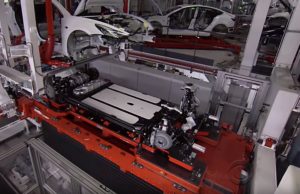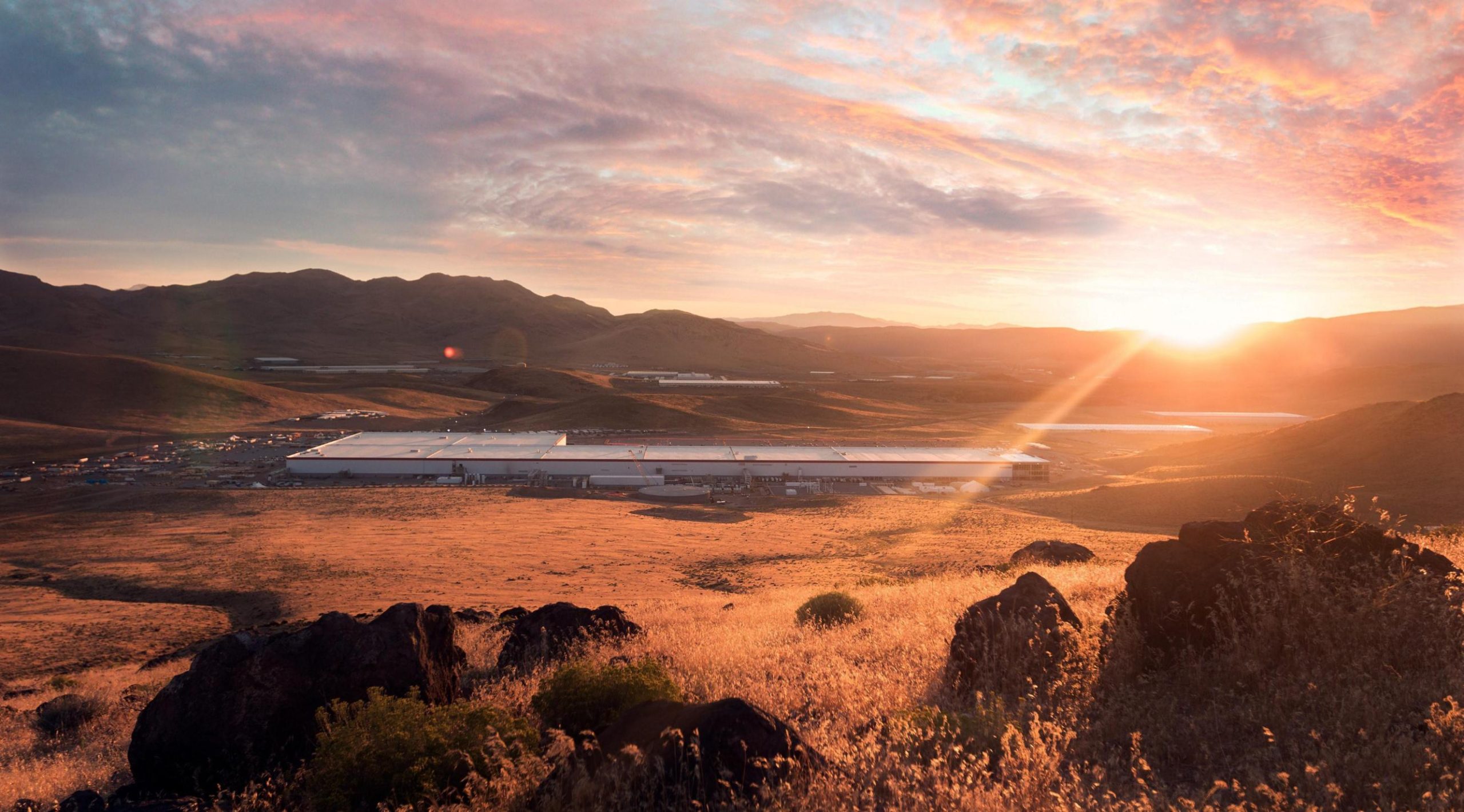
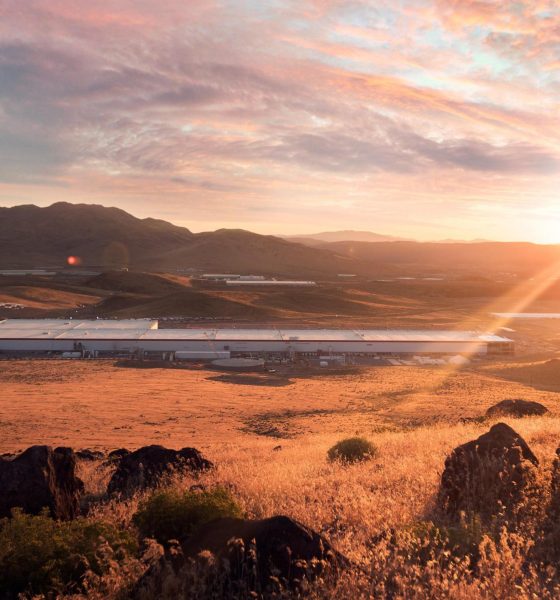
News
Lithium mine near Tesla Gigafactory plans to break ground as global shortage rears head
Just 150 miles north of Tesla’s Gigafactory, a plan is brewing to a build a massive mine capable of growing the world’s lithium carbonate supply by a full 15% as early as 2022 and more than 20% by 2026, compared to 2018. Tesla could, in other words, find itself neighbors with one of the largest concentrated supplies of lithium carbonate in the world less than a decade from now.
Known as Lithium Americas, the company behind the study has conservatively estimated that it could break ground on its prospective Northern Nevada Li2CO3 mine as early as the end of 2020 and ramp up to an annual output of 30,000 metric tons of the basic Li-ion battery precursor just 21 months after that. The mine’s output would then double by 2026, coming to rest at a maximum annual lithium carbonate output of 60,000 tons.
Theoretical estimates conducted by a number of academic parties in the 2010s have shown that any given high-quality lithium-ion battery would be expected to require 2-3 kilograms of lithium carbonate per kWh of final capacity, although the absolute physical minimum is closer to 0.4 kg. To sustain Gigafactory 1’s 35 GWh 2018 production goal, that single factory alone could require between 60,000 and 85,000 tons of lithium carbonate annually to sustain its battery production operations alone.
- The Model 3 assembly line inside the Sprung Structure in Tesla’s Fremont factory. [Credit: The New York Times]
- Building giant factories like Gigafactory 2 demands major capital investments that often require private equity sales. (Tesla)
To put this requirement in context, the entire global supply of lithium carbonate is expected to peak at ~250,000 tons in 2018 after astounding YoY production growth of 21.5% from 2016 to 2017 – Tesla’s demands this year could thus easily swallow 25-30% of the entire global lithium carbonate supply.
Despite those staggering numbers, Gigafactory 1 production is still expected to ramp (albeit based on optimistic 2016 Elon Musk numbers) as high as 105 GWh of cells and 150 GWh of packs annually by the time it is fully completed, likely a few years after the original 2020 estimate. Roughly 7 times the volume of Tesla’s 2018 production goals for the massive factory, sustaining that final volume of production (255 GWh annually) would literally require the global supply of lithium carbonate to grow by a bare minimum of 250% in less than half a decade. To reiterate, that is for a single Gigafactory, of which Tesla plans to construct several more in China, Europe, and elsewhere.
- A peek inside a segment of a Tesla Model 3 battery pack.
- Gayle King tours the Tesla Model 3 production line with CEO Elon Musk at the Fremont factory [Source: CBS This Morning]
Put simply, Tesla is going to need every ounce of lithium supply they can get their hands on, and Lithium Americas’ prospective Nevada offering could theoretically supplement that total required supply by as much as 10% by the mid-2020s. Tesla, however, is already hard at work attempting to secure a strong and satisfactory supply of lithium and other rare earth metals and materials required to produce premium-grade Li-on batteries.
Tesla already has agreements to buy lithium from a somewhat smaller Nevadan effort from Pure Energy Minerals (phase 1 production NET 2020) and Bacanora’s Sonora Lithium prospect (NET 2020), lithium hydroxide (a product of lithium carbonate) from Australian upstart Kidman Resources (NET 2021), and also plans to invest directly in lithium heavyweight SQM to strengthen a foothold in Chile, the current owner of ~50% of the world’s lithium mining rights.

News
Tesla (TSLA) receives “Buy” rating and $551 PT from Canaccord Genuity
He also maintained a “Buy” rating for TSLA stock over the company’s improving long-term outlook, which is driven by autonomy and robotics.

Canaccord Genuity analyst George Gianarikas raised his Tesla (NASDAQ:TSLA) price target from $482 to $551. He also maintained a “Buy” rating for TSLA stock over the company’s improving long-term outlook, which is driven by autonomy and robotics.
The analyst’s updated note
Gianarikas lowered his 4Q25 delivery estimates but pointed to several positive factors in the Tesla story. He noted that EV adoption in emerging markets is gaining pace, and progress in FSD and the Robotaxi rollout in 2026 represent major upside drivers. Further progress in the Optimus program next year could also add more momentum for the electric vehicle maker.
“Overall, yes, 4Q25 delivery expectations are being revised lower. However, the reset in the US EV market is laying the groundwork for a more durable and attractive long-term demand environment.
“At the same time, EV penetration in emerging markets is accelerating, reinforcing Tesla’s potential multi‑year growth runway beyond the US. Global progress in FSD and the anticipated rollout of a larger robotaxi fleet in 2026 are increasingly important components of the Tesla equity story and could provide sentiment tailwinds,” the analyst wrote.
Tesla’s busy 2026
The upcoming year would be a busy one for Tesla, considering the company’s plans and targets. The autonomous two-seat Cybercab has been confirmed to start production sometime in Q2 2026, as per Elon Musk during the 2025 Annual Shareholder Meeting.
Apart from this, Tesla is also expected to unveil the next-generation Roadster on April 1, 2026. Tesla is also expected to start high-volume production of the Tesla Semi in Nevada next year.
Apart from vehicle launches, Tesla has expressed its intentions to significantly ramp the rollout of FSD to several regions worldwide, such as Europe. Plans are also underway to launch more Robotaxi networks in several more key areas across the United States.
News
Waymo sues Santa Monica over order to halt overnight charging sessions
In its complaint, Waymo argued that its self-driving cars’ operations do not constitute a public nuisance, and compliance with the city’s order would cause the company irreparable harm.

Waymo has filed a lawsuit against the City of Santa Monica in Los Angeles County Superior Court, seeking to block an order that requires the company to cease overnight charging at two facilities.
In its complaint, Waymo argued that its self-driving cars’ operations do not constitute a public nuisance, and compliance with the city’s order would cause the company irreparable harm.
Nuisance claims
As noted in a report from the Los Angeles Times, Waymo’s two charging sites at Euclid Street and Broadway have operated for about a year, supporting the company’s growing fleet with round-the-clock activity. Unfortunately, this has also resulted in residents in the area reportedly being unable to sleep due to incessant beeping from self-driving taxis that are moving in and out of the charging stations around the clock.
Frustrated residents have protested against the Waymos by blocking the vehicles’ paths, placing cones, and “stacking” cars to create backups. This has also resulted in multiple calls to the police.
Last month, the city issued an order to Waymo and its charging partner, Voltera, to cease overnight operations at the charging locations, stating that the self-driving vehicles’ activities at night were a public nuisance. A December 15 meeting yielded no agreement on mitigations like software rerouting. Waymo proposed changes, but the city reportedly insisted that nothing would satisfy the irate residents.
“We are disappointed that the City has chosen an adversarial path over a collaborative one. The City’s position has been to insist that no actions taken or proposed by Waymo would satisfy the complaining neighbors and therefore must be deemed insufficient,” a Waymo spokesperson stated.
Waymo pushes back
In its legal complaint, Waymo stated that its “activities at the Broadway Facilities do not constitute a public nuisance.” The company also noted that it “faces imminent and irreparable harm to its operations, employees, and customers” from the city’s order. The suit also stated that the city was fully aware that the Voltera charging sites would be operating around the clock to support Waymo’s self-driving taxis.
The company highlighted over one million trips in Santa Monica since launch, with more than 50,000 rides starting or ending there in November alone. Waymo also criticized the city for adopting a contentious strategy against businesses.
“The City of Santa Monica’s recent actions are inconsistent with its stated goal of attracting investment. At a time when the City faces a serious fiscal crisis, officials are choosing to obstruct properly permitted investment rather than fostering a ‘ready for business’ environment,” Waymo stated.
News
Tesla FSD v14.2.2 is getting rave reviews from drivers
So far, early testers have reported buttery-smooth drives with confident performance, even at night or on twisty roads.

Tesla Full Self-Driving (Supervised) v14.2.2 is receiving positive reviews from owners, with several drivers praising the build’s lack of hesitation during lane changes and its smoother decision-making, among others.
The update, which started rolling out on Monday, also adds features like dynamic arrival pin adjustment. So far, early testers have reported buttery-smooth drives with confident performance, even at night or on twisty roads.
Owners highlight major improvements
Longtime Tesla owner and FSD user @BLKMDL3 shared a detailed 10-hour impression of FSD v14.2.2, noting that the system exhibited “zero lane change hesitation” and “extremely refined” lane choices. He praised Mad Max mode’s performance, stellar parking in locations including ticket dispensers, and impressive canyon runs even in dark conditions.
Fellow FSD user Dan Burkland reported an hour of FSD v14.2.2’s nighttime driving with “zero hesitations” and “buttery smooth” confidence reminiscent of Robotaxi rides in areas such as Austin, Texas. Veteran FSD user Whole Mars Catalog also demonstrated voice navigation via Grok, while Tesla owner Devin Olsen completed a nearly two-hour drive with FSD v14.2.2 in heavy traffic and rain with strong performance.
Closer to unsupervised
FSD has been receiving rave reviews, even from Tesla’s competitors. Xpeng CEO He Xiaopeng, for one, offered fresh praise for FSD v14.2 after visiting Silicon Valley. Following extended test drives of Tesla vehicles running the latest FSD software, He stated that the system has made major strides, reinforcing his view that Tesla’s approach to autonomy is indeed the proper path towards autonomy.
According to He, Tesla’s FSD has evolved from a smooth Level 2 advanced driver assistance system into what he described as a “near-Level 4” experience in terms of capabilities. While acknowledging that areas of improvement are still present, the Xpeng CEO stated that FSD’s current iteration significantly surpasses last year’s capabilities. He also reiterated his belief that Tesla’s strategy of using the same autonomous software and hardware architecture across private vehicles and robotaxis is the right long-term approach, as it would allow users to bypass intermediate autonomy stages and move closer to Level 4 functionality.
